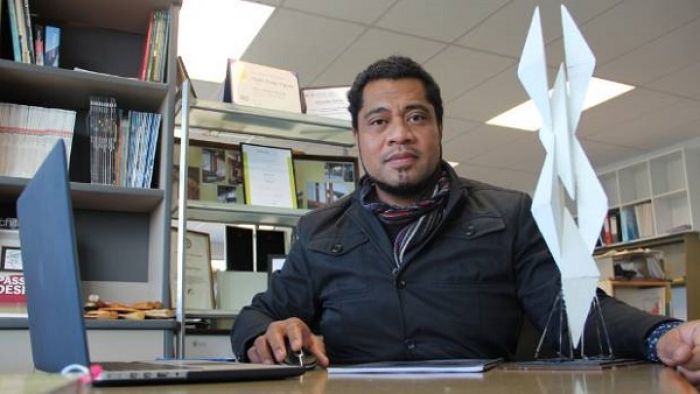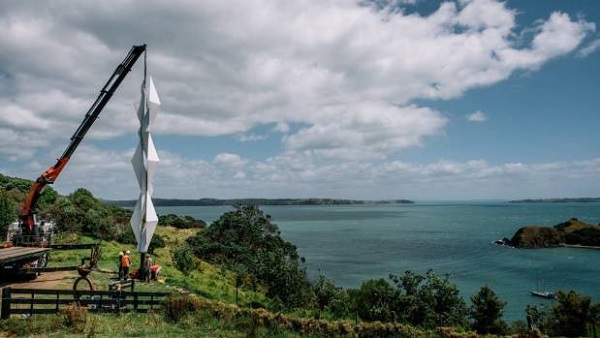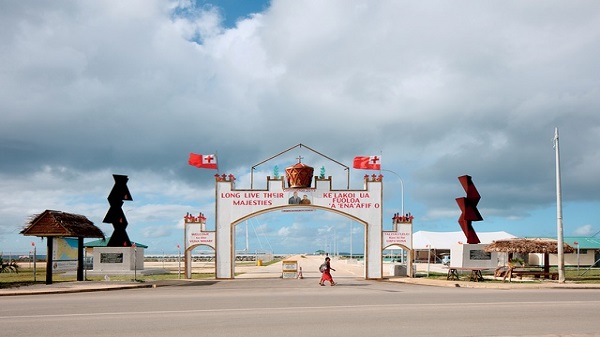Tiny Kingdom of Tonga to be represented at Reviving Humanity Art Initiative for World Youth Forum, November 2018, in Egypt Featured
 Semisi Fetokai Potauaine
Semisi Fetokai Potauaine
27 September, 2018. An internationally renowned Tongan-born, Aotearoa New Zealand-based, multi-media artist Semisi Fetokai Potauaine has been chosen and invited to represent the tiny Kingdom of Tonga at the up-and-coming Reviving Humanity Art Initiative for the World Youth Forum, November 2018, in Egypt.
The design Reviving Humanity Art Initiative by Shosha Kamal Design House for the World Youth Forum aims at bringing together the whole world with a joint vision and mission to revive our common humanity, now increasingly forgotten due to human-made wars, terrors and misfortunes the world over.
This design is inspired by the human heart as a necessary physical entity that requires balance in terms of the totality of bodily functions, and a pointer for the whole world that reviving humanity is now a necessary condition of our common existence and not a freely-given human luxury.
This biggest art for humanity will unite 195 artists representing 195 countries, congregating on the land of Egypt to sculpt 195 human hearts, culturally informed by their own views of humanity, with a view to reviving this now long-for noble sentiment with a sense of originality, creativity and innovation.
Semisi has won a number of local and international prestigious art awards, such as the Commonwealth International Connection Art Residency in 2009, which he spent in 2010 at the Museum of Archaeology and Anthropology (MAA), Cambridge University, resulting both in an art exhibition and a catalogue.
He holds several undergraduate and postgraduate qualifications in architecture.
Semisi has produced iconic works of sculpture, which include Manuesina on Waiheke and Vaka'ahina in Christchurch, in Aotearoa New Zealand, and twin Hinavakamea and Tunavakamea at Vuna Wharf in Tonga.


2 comments
-
![Okusitino Mahina [Hufanga]](https://secure.gravatar.com/avatar/3faef0c7fca480e4d3fd4ffffa7a37c4?s=48&default=https%3A%2F%2Fnepituno.to%2F%7Enepituno%2Fcomponents%2Fcom_k2%2Fimages%2Fplaceholder%2Fuser.png)
What a great news indeed! Congratulations Semisi Fetokai Potauaine on your huge achievement on behalf of the tiny Kingdom of Tonga. What a rare opportunity for such thoughtful and skillful artists as the calibre of Semisi to showcase the depth and breadth of Tongan thinking and feeling alongside the cultures of the world.
Semisi has taken Tongan kupesi as a work of material art in tufunga lalava (kafa-sennit-interlacing / lashing [that is, intersecting or connecting and separating]) to a whole new exciting level, in original, creative and innovative ways.
Herein, Semisi has uniquely made it his trademark by shifting Tongan kupesi from their two-dimensional use in such old material arts as tufunga tatatau (tattooing) and tufunga ngaohikulo (pottery-making) and such fine arts as nimamea'a koka'anga (bark-cloth-making) and nimamea'a lalanga (weaving) to their clever four-dimensional use in such new material arts as tufunga tongi/taukamea (steel-cutting) and tufunga tongi/ta'akau (wood-cutting) amongst others.
This is most evident in his so-called iconic works of art in sculpture, notably as twin Hinavakamea and Tunavakamea, Lei'ataua, Manuesina and Vaka'ahina, where an infinite number of kupesi are formally and substantially integrated (and not merely imposed) as integral parts, which are in constant motion in multi-directional and multi-dimensional ways. -

Many thanks deservedly go to Semisi Fetokai Potauaine for such a huge honour and privilege to have been chosen and invited as the Tongan artist to represent the tiny Kingdom of Tonga on the world stage at this truly global sociopolitical event of extreme artistic significance in none other than marvelous Egypt as one of the few great ancient civilisations.
It is said that many, if not all, of his so-called iconic works of art in steel sculpture are inspired by our very own ancient Tongan (and Moanan Oceanian) kupesi, the most beautiful and elaborate geometric designs, which will surely continue to uniquely inspire him in new ways for the ancient civilisation of Tonga at this magnificent global undertaking!
By the way, I understand that one of the most attractive twin steel sculptures Tunavakamea at the gateway to Vuna Wharf was taken down by Cyclone Gita and now dumped by the Ministry of Tourism at the foreshore, which is obviously (but really unthinkably and sadly so) to rot and waste away, when as a matter of fact they have been effective and useful tourist attractions amidst many other good things.



